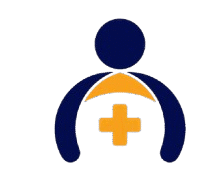A Friendly Guide for Families and Caregivers
🥣 Tube Feeding at Home in Gurgaon — A Friendly Guide for Families and Caregivers
Namaste!
If your loved one has been advised tube feeding by the doctor and you’re now bringing them home… I understand what you’re going through.
You might be asking yourself:
“Is it safe to feed through a pipe at home?”
“What if I do it wrong?”
“How do I know if they’re getting enough food?”
Take a deep breath. You’re not alone.
This guide is written in simple, friendly English — just like I would speak to you if you were sitting in front of me. Let’s take it one step at a time.
🍲 What is Tube Feeding?
Tube feeding is a method used when someone cannot eat by mouth. A soft pipe is inserted into their stomach, and liquid food is given through it. It might sound complicated, but it’s actually quite manageable at home.
There are two common types:
- Ryles Tube – inserted through the nose into the stomach. Used temporarily.
- PEG Tube – inserted directly into the stomach through the skin. Used for long-term care.
We give food in liquid form through this tube — things like dal water, milk, rice water, or doctor-prescribed commercial feeds.
Think of it as helping the body receive food when the mouth isn’t an option.
🧠 Let’s take a pause and remember:
- ✔️ Tube feeding = giving food through a soft pipe into the stomach
- ✔️ Ryles Tube = short-term care through the nose
- ✔️ PEG Tube = long-term care through the stomach
- ✔️ Feeds are always in liquid form
👵 Who Needs Tube Feeding?
Families often ask, “Is this really needed?” Here are the situations where it helps:
- Patients who had serious brain damage, stroke, or coma
- Elderly people who are not eating enough or are too weak to chew/swallow
- Patients with oral cancer, burns, or injury to the face/mouth
- People with swallowing difficulties due to Parkinson’s, ALS, or other neurological diseases
In our elderly care services in Gurgaon, tube feeding is very common, especially for stroke survivors or patients recovering at home after ICU stays.
❤️ Let’s pause here:
- ✔️ Tube feeding helps when eating by mouth is not possible
- ✔️ It supports nutrition, energy, and healing
- ✔️ Often used in elderly care, post-ICU recovery, or cancer cases
🥛 What Food Can Be Given?
The feed must always be liquid. You can give:
- Dal soup
- Rice water
- Milk or curd (lassi)
- Commercial food supplements (like Ensure, Resource, Isocal)
- Any doctor-approved nutrition plan
The feeds are poured into a feeding bag, connected to the tube, and slowly released into the stomach.
Make sure:
- It’s at room temperature
- It’s not too thick
- It’s given slowly over 20–30 minutes
📝 Let’s reflect for a second:
- ✔️ Feeds must be in liquid form only
- ✔️ Talk to a doctor/dietician for the plan
- ✔️ Give it slowly and gently
⚠️ Important Safety Tips for Tube Feeding at Home
This is the part where you become confident.
Here’s what you must take care of when giving tube feeding at home:
- Check the tube’s position – use a stethoscope and syringe if you’re trained, or ask a nurse to check.
- Patient posture – keep your loved one in a sitting or semi-reclined position (30–45° angle).
- Check leftover food – gently pull back with a syringe to see if previous feed is digested.
- Give water flush – after every feed, give 10–30ml of plain water to prevent tube clogging.
- Clean your feeding bag – wash after every use. Replace it regularly as per protocol.
We help families set this up in a simple, step-by-step way at At Home Care in Gurgaon.
🧾 Before we go further, remember this checklist:
- ✔️ Always check the tube before feeding
- ✔️ Feed in upright position
- ✔️ Never rush — slow is safe
- ✔️ Clean the equipment well
- ✔️ Flush water after every feed
💖 A Special Word on Elderly Tube Feeding
This part is close to the heart.
Elders often resist feeding tubes. They feel uncomfortable. They feel emotional. And honestly, as caregivers, so do we.
But let’s remind ourselves:
They once fed us with love. Now it’s our turn.
Tube feeding in elderly care is not just about calories — it’s about respect, dignity, and warmth.
At At Home Care, our nurses speak gently, give emotional support, and make the patient feel cared for — not just treated.
👵 Let’s reflect gently here:
- ✔️ Talk to them while feeding — connection matters
- ✔️ Maintain routines and emotional comfort
- ✔️ Kindness heals faster than medicine sometimes
📞 Final Words — You’re Not Alone
Tube feeding at home is safe and possible — when you have the right support, the right training, and the right heart.
If you ever feel confused, or just want someone to walk you through the process, our team is here — with trained nurses, medical equipment, and emotional care.
📍 Visit AtHomeCare.in or call us today.
We’ll make this journey easier for you.
Because feeding isn’t just about nutrition.
It’s about love.
And love begins at home. 💚
